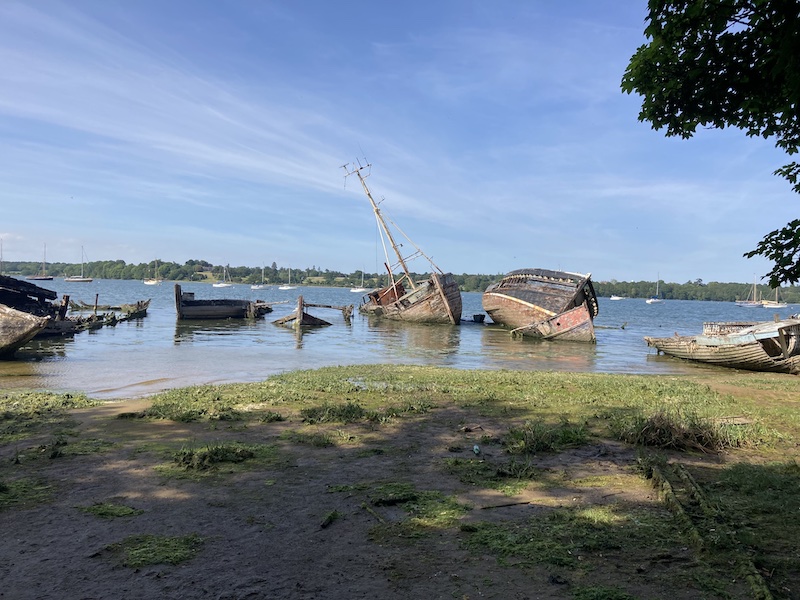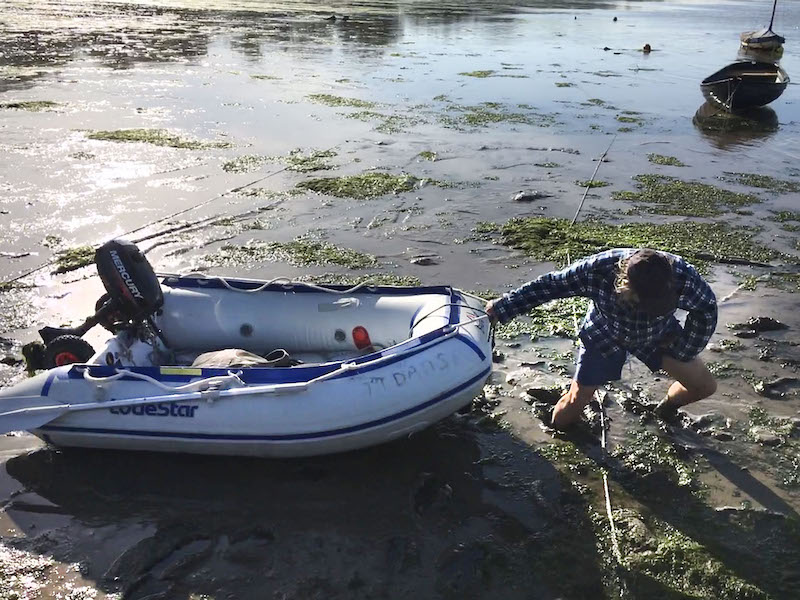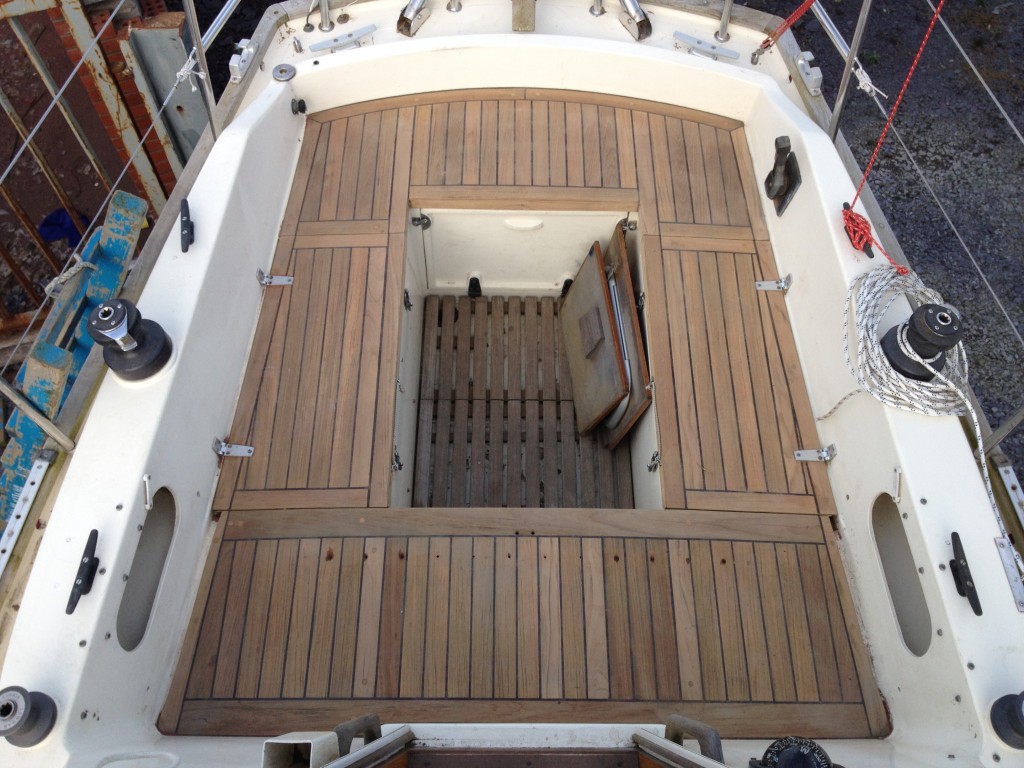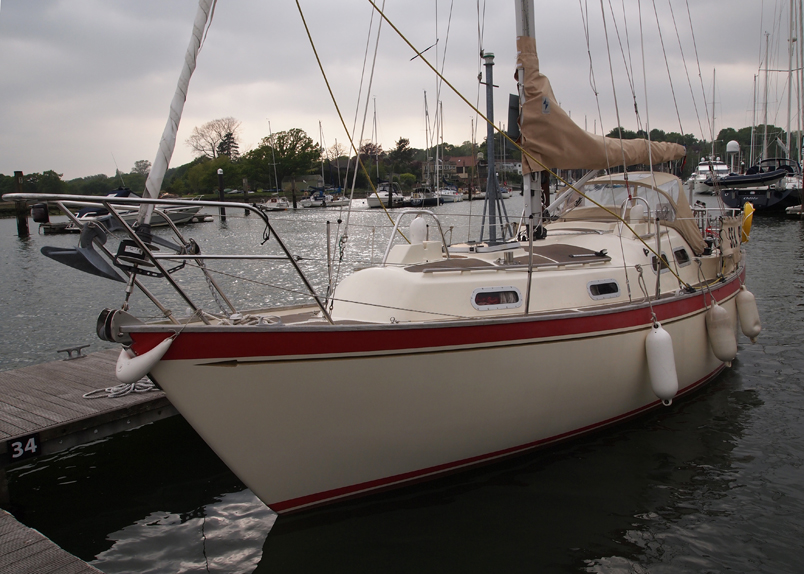Rebuilding the engine
This off-season I had decided to tackle the engine. Although over the years it had been pretty reliable it now looked a little tatty, the paint particularly on the rear of the engine was gone with lots of rust showing. I considering getting a new engine, perhaps a beta marine instead of the Yanmar but decided to best thing was to hoik the old Yanmar out, strip it down and inspect it and then make the decision..
Once the boat was out of the water, shored up in the yard, It didn’t take long to disconnect it and then the yard hoisted it out for me and lowered into the back of my trailer. I could take it home and strip it in my garage. It would give me something to do over winter.

First look made me glad I had taken it out and I was soon stripping it down which revealed a few problems so a list of work and parts needed started. Digital photography is a great boon these days. Quick snaps of the disassembly process with a mobile phone give you a record of how things come apart and even of what they are! It helps to have a nice spare bench to lay out all the bits in order, grouped together or in separate trays. As work progressed I reckoned that with a rebuild there was no need for a new engine, and the extra work and expense that would entail.

Dismantling the head and lifting off the rocker assembly, I at first thought I had dropped one of the valve caps but close inspection and I realised it had been assembled with one missing. Worse was on removing the injectors, one came out easily enough the other was stuck. Eventually I freed it and then the reason for it’s ‘stuckness’ revealed. It had been assembled without the essential domed top of the injector chamber and heat shield washers. There were some curses for the bodge artist who last had had the engine apart and put it back together with the parts missing. No wonder that it hadn’t been running so smoothly.

The internal water ways in the block and head were badly ‘limed” up so I cleaned these by sealing off the outlets and filling the passages up with cheap white vinegar. This fizzed reassuringly with plenty of bubbles so you knew it was doing it’s work. Flushed out after an overnight soak the passageways were nice and clean.

With the block stripped of old paint, wire brushed and de greased, it was time to repaint. What to use? In the end it seemed a choice between tractor enamel or Rustoleum, I opted for Rustoleum as there were favourable comments about it on various forums. 2 coats of primer and 2 of top coat were used and the rest of the engine parts similarly treated. The resulting colour was a little more silvery than the original Yanmar paint. Time will tell if it is nicely durable.

Gradually the engine went back together, a new oil seal behind the flywheel, valves ground in, a new external oil pipe, new valve oil seals and cap, new injector nozzles, the correct ignition chamber parts and some other bits. I even built a sort of frame for the trailer to which I could bolt the engine so it didn’t slide around when I would take it back to the yard. By the end of January it was all done, ready to fit back in the boat. That would wait until later when the days were a little longer and hopefully warmer.










